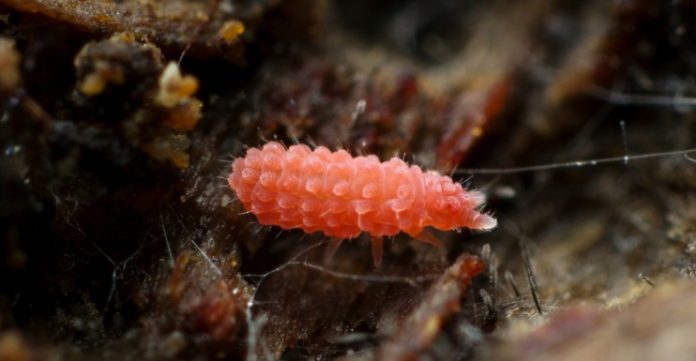
Arwyn Jones and Alberto Orgiazzi, European Commission Joint Research Centre Sustainable Resources Directorate – Land Resources Unit, discuss the importance of soil biodiversity…
Soil condition underpins food security, green growth, bio-economies and aboveground biodiversity; it regulates climate, the hydrological and nutrient cycles, while mitigating climate change. Soils provide resilience against floods and droughts, buffers the effects of pollutants and preserves cultural heritage. Healthy, functional soils underpin several of the UN’s Sustainable Development Goals.
What is not widely perceived is that functions, such as soil fertility, carbon sequestration and nitrogen cycling, are actually conditioned by the presence and interactions of soil-dwelling organisms which not only keeps the planet, but also us, alive. Life-saving penicillin, one of the most widely used antibiotics, comes from the soil fungus Penicillium chrysogenum, while new types of antibiotics based on culturing bacteria in soil (e.g. Teixobactin) have proved be very effective against both Staphylococcus aureus (respiratory tract infections) and the Koch’s bacillus, which causes tuberculosis. There is a growing body of evidence that the human immune system requires activation and exercise in order to function properly and that a lack of contact with soil microorganisms during childhood could be the cause of the epidemic of allergies in developed countries.
In reality, soils are full of life. A single gram of soil may contain millions of individual bacteria and several thousand species. A handful of arable soil under a temperate climate contains approximately 0.5g of fresh biomass, which is mainly microbial. This equates to around 5 tonnes of animal life in the topsoil of a single hectare – equivalent to 100 sheep or 20 African elephants. Under grasslands, the amount of living organisms can be 20 times greater, which is 2,000 sheep per hectare – orders of magnitude more that the average stocking densities for grazing sheep. In fact, a healthy soil can contain species of vertebrate animals (e.g. moles), several species of earthworms, 20-30 species of mites, 50-100 species of insects, tens of species of nematodes, hundreds of species of fungi and probably thousands of bacteria species. On the other extreme, a single colony of the honey fungus, Armillaria ostoyae, can cover an area of about 9 km2. Even the smell of wet soil after rain falls on dry ground is due to the release of an organic compound (known as geosmin) from a type of soil bacteria.
However, our knowledge and understanding of soil as a habitat is limited. While it is thought that 60% of the world’s ants have been classified, only 3% of the nematodes, 6.5% of fungi and 1.5% of bacteria, have been identified. Soil biologists estimate that there may be between, 1.5 to 5 million species of fungi on the planet – to date, only 100,000 have been identified.
Apart from a few exceptions (for example, moles, earthworms and ants), public awareness of life in soil is almost completely lacking. To overcome this deficiency, and help decision makers develop policies to safeguard these organisms and their associated services, the European Commission’s Joint Research Centre (JRC), together with the Global Soil Biodiversity Initiative[1], has recently published the first ever Global Atlas of Soil Biodiversity[2].
Freely available to download from the JRC’s website[3] (hard copies can be published from the EU Bookshop[4]), the 180 page publication is the result of a global effort between more than 120 researchers. Developed with the non-expert in mind, the Atlas guides readers into the fascinating world of soil biology and explains how soils form and evolve in to specific habitats where physical and chemical soil characteristics condition soil-dwelling communities. A striking element of the Atlas is a group by group guide to soil organisms. Starting with the smallest and working its way to mammals, reptiles and even birds, the reader is presented with a clear and comprehensive description of the diversity of soil organisms, the factors controlling their geographical and temporal distribution, and the ecosystem services and functions that they provide.
A key message of the Atlas is the diverse array of threats to soil biodiversity coming from land use change (e.g. deforestation), the sealing of soils by artificial surfaces, the introduction of invasive species, pollution, acid rain and nutrient overloading, agricultural practices (including overgrazing), fire, soil erosion and land degradation, desertification and climate change. For the first time, the Atlas presents a global overview of the potential threats to soil diversity based on the previously mentioned factors (Figure 1).
Soil biodiversity is critical for achieving sustainability goals on healthy food, reducing greenhouse gases emissions, lessening desertification and soil erosion, and preventing disease. Gaps in our knowledge of soil biodiversity must be acknowledged. The collection and synthesis of soil biodiversity data globally should be sustained and enhanced in order to better understand and predict the effects of global drivers of land degradation on soil organisms and the functions that they deliver. It is time for people to broaden their view of biodiversity, not just thinking about plants and large mammals, but also the tiny, colourful and fascinating tardigrades and springtails that live in the soil. It is in our interest to understand better life in the soil as our very existence depends on them.
References:
[1] https://globalsoilbiodiversity.org
[2] Orgiazzi, A., Bardgett, R.D., Barrios, E., Behan-Pelletier, V., Briones, M.J.I., Chotte, J-L., De Deyn, G.B., Eggleton, P., Fierer, N., Fraser, T., Hedlund, K., Jeffery, S., Johnson, N.C., Jones, A., Kandeler, E., Kaneko, N., Lavelle, P., Lemanceau, P., Miko, L., Montanarella, L., Moreira, F.M.S., Ramirez, K.S., Scheu, S., Singh, B.K., Six, J., van der Putten, W.H., Wall, D.H. (Eds.), 2016, Global Soil Biodiversity Atlas. European Commission, Publications Office of the European Union, Luxembourg. 176 pp
[3] http://esdac.jrc.ec.europa.eu/content/global-soil-biodiversity-atlas
[4] http://bookshop.europa.eu/en/global-soil-biodiversity-atlas-pbLBNA27236
Arwyn Jones
arwyn.jones@jrc.ec.europa.eu
Alberto Orgiazzi
alberto.orgiazzi@jrc.ec.europa.eu
European Commission Joint Research Centre
Sustainable Resources Directorate – Land Resources Unit
Please note: this is a commercial profile










